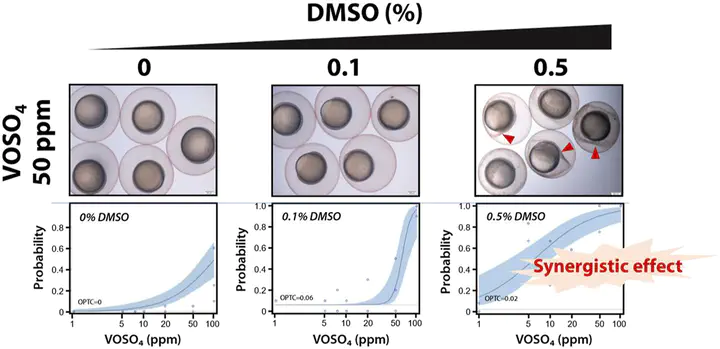Combined toxicity of dimethyl sulfoxide (DMSO) and vanadium towards zebrafish embryos (Danio rerio): Unexpected synergistic effect by DMSO

Abstract
Dimethyl sulfoxide (DMSO) is produced in nature and is known to be a source of carbon and sulfur for marine microorganisms. It is currently used in many biological experiments, pharmaceutical preparations, and energy-producing systems such as lithium batteries. Therefore, the toxicity of DMSO has been studied because of its various implications to living organisms; however, such studies are largely limited to measuring individual toxicity whereas the combined toxicity of DMSO with other compounds has rarely been investigated. In the present study, the combined acute toxicity of 0.1% and 0.5% DMSO with vanadium was investigated in zebrafish embryos; the LC50 values of these combinations were 62.0 and 6.38 ppm, respectively. In individual toxicity tests, neither DMSO nor vanadium caused such mortality levels. Therefore, both 0.1% and 0.5% DMSO had a synergistic effect with vanadium, and this result was confirmed using an independent action model. This combined toxicity delayed the development of zebrafish embryos and caused pericardial edema. The synergistic effect of DMSO and vanadium was found to be related to reduced pH and inhibition of cytochrome c oxidase activity. Given its potential synergistic toxicity to aquatic organisms, the introduction of DMSO into the environment should be investigated and routinely monitored.